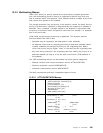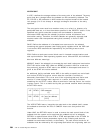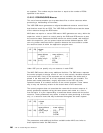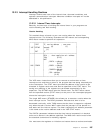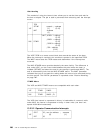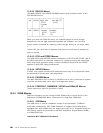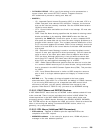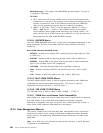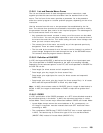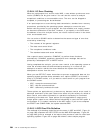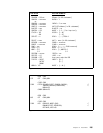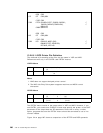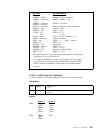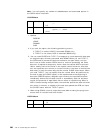•
CATALOG=YES/NO - NO is used if the catalog is to be processed as a
normal cluster with normal GET/PUT macros. Programs must be
APF-authorized to process a catalog as a data set.
•
MACRF=(
−
ICI
- Improved-Control-Internal-Processing (ICIP) is to be used. ICIP is a
VSAM ″fast-path″ that reduces CPU utilization. However, the functions
that can be used are severely restricted. See the
VSAM Administration
Guide
for more details.
−
CFX
- Control blocks and buffers are fixed in real storage. ICI must also
be specified.
−
DSN
- Data Set Name sharing specifies that the basis for sharing control
blocks and buffers is by matching VSAM NAMEs when the files are
opened by the
SAME
task. Unless this option is used, a separate ACB
that opens the same data set can have the same integrity problems as a
program within another region. This includes potential destruction of the
file if concurrent updates are allowed. DSN is most commonly used to tie
buffers of a base ACB to the control blocks of the base ACB associated
with a path.
−
SIS
- Sequential Insert Strategy is used to override the default control
interval or area split algorithm for direct processing. SIS will cause the
splits to occur at the insert point rather than at midpoint when direct
PUTs are done. Although positioning is lost and writes are done after
each direct PUT request, SIS allows more efficient space usage when
direct PUTs are done against ascending keys in a KSDS.
−
GSR
- Global Shared Resources specifies that the data set is to be tied
to a common VSAM resource pool of control blocks, strings and buffers
that is allocated in the MVS Common System Area (CSA). This provides
for VSCR.
−
LSR
- Local Shared Resources is similar to GSR except the resource
pool is built in a single address space and integrity is limited to that
region.
•
BSTRNO = n - The number of strings allocated to the base cluster
associated with a Path ACB. For a Path ACB, the default is STRNO; however,
if you are using DSN sharing to tie a separate base ACB control block
structure to the path, you can specify additional base strings for that
purpose. Refer back to ″DSN″ for why you want to use DSNAME sharing.
13.2.5.2 EXLST Macro and EXCPAD Routines
A VSE VSAM EXLST macro that has a EXCPAD routine address coded will have
to be converted. There is not an equivalent exit routine in MVS VSAM. The
closest equivalent is the MVS VSAM UPAD exit routine which allows user
processing during a VSAM request. However, the GENCB, MODCB, SHOWCB,
and TESTCB macros do not support the UPAD exit routine. Great care should be
taken in converting and testing a converted EXCPAD routine, since it is,
generally, very complicated code.
13.2.5.3 RPL Macro (Additional MVS Parameters)
•
ECB=address - Request to VSAM to post the specified ECB at the
completion of the RPL request.
•
MSGAREA=address - In the case of a physical error, VSAM will place a
message in the area address specified.
Chapter 13. Assembler 291



